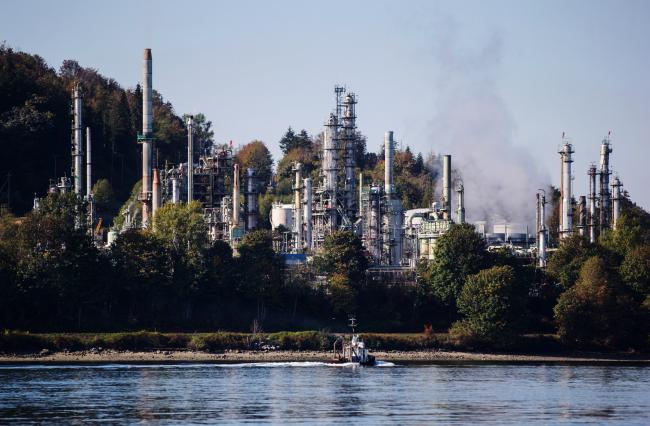(Bloomberg) -- Oil headed for its longest string of quarterly gains in more than a decade as impending supply disruptions threaten to fracture a global market with little margin for error.
Futures rose as much as 1.8 percent in New York on Friday while London-traded crude was on track for a fifth quarterly advance, a streak not seen since the first half of 2008. This historical echo comes as consumers once again eye supply disruptions and worry about the availability of backup supplies, just as they were a decade ago when the benchmark hit an all-time high above $147.
Fears are growing that the constriction of Iranian exports by U.S. sanctions and the collapse of Venezuela’s oil industry will leave a deep shortfall in the market. Those worries have only been stoked this week as key producers from Saudi Arabia to Russia and the U.S. signaled their reserves are off limits.
Some of the world’s largest oil producers and traders are warning that triple-digit prices could soon return, with negative consequences for the economy.
“There is concern in the market that the loss of barrels from Iran and Venezuela is not going to be made up for through extra supplies from particularly Saudi Arabia and Russia,” said Gene McGillian, manager of market research at Tradition Energy. “Worries about trade relations affecting economic growth have fallen away.”
Oil has risen to the highest in almost four years in London after OPEC showed little enthusiasm for raising output despite President Donald Trump’s demand for lower prices. The world will need additional supplies as U.S. sanctions dissuade major importers including India and South Korea from purchasing Iranian crude.
Trading houses such as Trafigura Group Pte Ltd and Mercuria Energy Group Ltd have predicted prices will exceed $100 a barrel. Banks including Bank of America Corp (NYSE:BAC). and JPMorgan Chase & Co (NYSE:JPM). aren’t quite that bullish, but are lifting their forecasts. Meanwhile, BP (LON:BP) Plc and Total SA (PA:TOTF) cautioned that such a rally would hurt demand, especially as U.S.-China trade tensions escalate.
Brent for November delivery rose $1.06 to $82.78 a barrel at 11:14 a.m. on the ICE Futures Europe exchange in London. Since the end of June 2017, Brent has increased 73 percent. The November contract expires on Friday.
West Texas Intermediate for November delivery advanced $1.04 to $73.16 on the New York Mercantile Exchange. It’s trading at a $9.62 discount to Brent. Total volume traded was about 18 percent below the 100-day average.
Investors are now watching to see what Trump will do next after U.S. Energy Secretary Rick Perry ruled out the release of oil from the Strategic Petroleum Reserve, saying the move would have “a fairly minor and short-term impact.” Earlier this week, the president accused the Organization of Petroleum Exporting Countries of “ripping off the rest of the world.”
Other oil-market news:
- Gasoline futures rose 1.6 percent to $2.115 a gallon
- A two-day surge turned a sludgy, sulfurous and low-quality crude into the world’s costliest oil benchmark this week, confounding traders and throwing the market into turmoil
- As oil refiners brace for the fallout from stricter ship-fuel emissions standards due in 2020, at least one Asian processor is considering how it can take advantage
